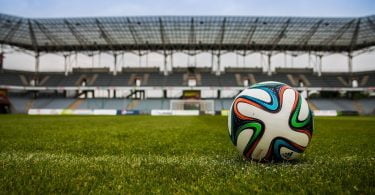There aren’t many players who can say they made their first competitive international start at the World Cup, but for Ruben Loftus-Cheek, that’s exactly what happened when he was given the nod to replace the injured Dele Alli in the line-up for England’s 6-1 demolition of Panama this past week.
Gareth Southgate’s willingness to thrust the inexperienced 22-year-old into such a high-profile game (even if, admittedly, the opposition weren’t up to much) is the clearest indication yet of the faith the England manager has in the midfielder. It was, after all, Southgate that took charge of the England under-21s when they won the Toulon Tournament in 2016 – a campaign in which Loftus-Cheek scored the winner in the final against France and was named Player of the Tournament.
Crystal Palace
A string of good performances in a struggling Crystal Palace side at the start of last season earned the on-loan Chelsea man his first senior call-up late last year, and his four friendly appearances (including a man of the match performance against Germany in November) were enough to earn him a seat on the plane to Russia at the expense of more experienced ball-playing midfielders like Jack Wilshere and Jonjo Shelvey.
And when England were desperately searching for a late winner against Tunisia in their tournament opener, it was Loftus-Cheek who Southgate turned to for the final ten minutes, opting for his passing ability and composure on the ball ahead of the more obvious goal threat posed by Jamie Vardy.
His chance came and so did a late winner for England. Loftus-cheek impressed in his cameo appearance and was rewarded with starts against both Panama and Belgium in England’s remaining group games.
Even if he doesn’t feature much as the World Cup gets to the nitty-gritty stages and Southgate has a full squad to pick from, Loftus-Cheek has shown enough to suggest he will be a feature of England squads for years to come.
Want to see how the #ThreeLions have been preparing for today's #WorldCup quarter-final?
? https://t.co/o4I7XVQn5o pic.twitter.com/9QxbNJUadt
— England (@England) July 7, 2018
But it’s been a long road to get here.
On Chelsea’s books from the age of eight, Loftus-Cheek feels like he has been on the verge of greatness for years. He has long been regarded as one of the Chelsea Academy’s great prospects; so much so that from the age of 16 he was regularly training with the first team. Frank Lampard has spoken of how the then-teenager’s physical stature and ability on the ball caught his eye, whilst Glenn Hoddle once compared him to Michael Ballack.
It’s an easy comparison to make. Like the German, Loftus-Cheek is a powerful midfielder capable of driving past players and making pinpoint accurate passes. His versatility means he can play in front of the defence, breaking up opposition attacks and launching counters, or higher up the pitch, where his playmaking abilities can hold the key to unlocking defences. Antonio Conte has even experimented with him as a striker, such is his technical ability. And whilst he’s unlikely to be bagging 30 goals a season anytime soon, he clearly has all the attributes to be a top Premier League player.
Bit part player
But at Chelsea – for the time being – his potential remained unfulfilled. Under both Jose Mourinho and Antonio Conte he has been relegated to a bit part player at Stamford Bridge, making just 32 appearances for the first team since 2014, including a meagre 30 minutes of game time across six substitute appearances in Chelsea’s 2016/17 title winning season.
Whilst opportunity has felt like it is just a fingertip away at Chelsea, it has never quite happened for him in West London and sitting on the bench hoping for a chance that hasn’t come has hampered his development at an age when he needs regular football. Just this week, Loftus-Cheek himself has criticised the lack of first-team opportunities available to youngsters at Chelsea; their academy side won the FA Youth Cup for the fifth time in a row this past season, but first-team chances have been few and far between at a club far more accustomed to purchasing rather than nurturing talent.
However, a loan spell at Crystal Palace last season revitalised his career. He made 24 Premier League appearances for them last season (and it would have been more had an ankle injury not ruled him out for several months at the start of the year), more than he has made for Chelsea in his entire career. Suddenly, he was not just a bright prospect showing glimpses of quality – he was a top Premier League midfielder performing at a consistently high level.
It wasn’t long before people took notice. Palace hadn’t even won a match last season before Southgate selected him for his first England squad, but such was his quality in a poor side that his call up didn’t feel unmerited.
And now he’s starting matches in the World Cup. After years of being on the fringes at Chelsea wondering what might have been, Loftus-Cheek has grabbed his opportunity with both hands and has gone from squad player to full international in a matter of months.
What does the future hold after Russia? He will go back to Chelsea with his stock the highest it has ever been. Whether that’s enough to convince both parties that Stamford Bridge is the place for him remains to be seen, but wherever he ends up, Loftus-Cheek looks set to finally deliver on his potential.









